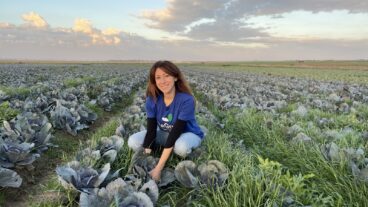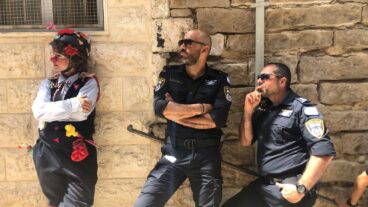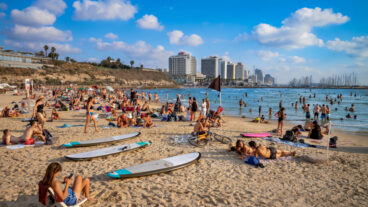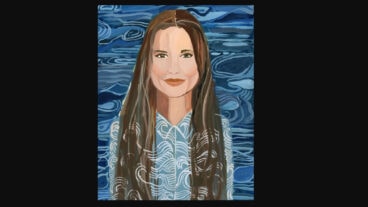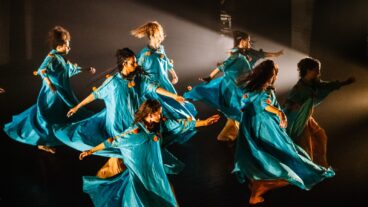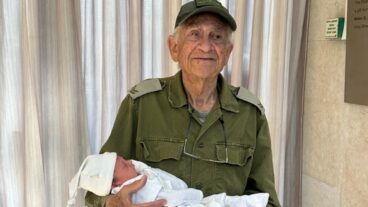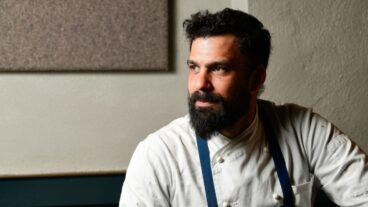Dr. Riad Agabria in his lab: If you educate a male, you’ve got one educated person; ifHelping Israel’s Bedouin community while making the state of Israel and the world a healthier place to live in – clinical pharmacologist Dr. Riad Agabria represents a threefold success story that focuses on education as the road to Arab-Jewish coexistence.
Born into a poor family of 13 siblings in Umm al-Fahm, a large town in Israel’s northern “Arab triangle” area, Agabria overcame considerable early challenges to earn his Ph.D. in 1991 from Ben-Gurion University in Beersheva.
After post-doctoral work at the National Institutes of Health in Bethesda, MD, and the National Cancer Institute, he returned as a professor to Ben-Gurion, where he currently pursues two primary areas of research.
The first marks a kind of experimental sneak-attack on cancer using gene therapy. Agabria’s technique: He inserts a non-toxic chemical into a
tumorous cell’s genes that causes the cell to “express” enzymes toxic to itself. The cell then self-destructs – end of cancer. It’s not as easy as it sounds, of course, but replacing “mutated” genes in cancerous cells has shown encouraging signs of curing certain types of leukemia.
Now Agabria, winner of a grant from the Israel Academy of Science, is working in collaboration with the National Cancer Institute and NIH to test different genes and to match drugs to genes for maximum effect. In his second area of research, Agabria is battling viral diseases such as HIV, with special attention to studying the effect of the anti-AIDS drug AZT on pregnant women infected with HIV. Among such women, HIV is typically transmitted during the birthing process to about 30 percent of newborn infants.
But when the women are treated with AZT, says Agabria, reporting results of his collaborative research with NIH and Beersheva’s Soroka Medical Center, three-fourths of infants who might otherwise be infected are protected from
HIV. “In Africa alone, we could save three million babies a year!” he exclaims.
Nor has professional success caused Agabria to forget his humble beginnings. “I know the problems of the Bedouin students because I went through it,” he says. He describes especially how the inferiority of Bedouin primary schools makes the leap into a modern university almost impossible, a situation that replicates his own early education. “I did not forget,” he says.
But Agabria did more than just “not forget.” Since returning to Ben-Gurion, he has devoted a large portion of his extraordinary energy to helping Negev Bedouin train in the health sciences through programs that will improve
individual lives and the Negev Bedouin community as a whole.
When he started teaching at BGU in 1995, Agabria reports, the total number of his Bedouin students was: zero. Until five years ago, no Bedouin women worked as health professionals in the Negev, and only this year will a Bedouin woman finally graduate as a physician from BGU.
To make these statistics come alive, he contrasts them with another set of statistics: In Soroka Medical Center’s pediatric departments, 70 percent of the children are Bedouin, even though Bedouin account for only 15 percent of the Negev population.
Equally troubling is the fact that, although Soroka’s has the Mideast’s “most advanced
mammography” clinic, the incidence of breast and cervical cancer is highest among the 120,000 Negev Bedouin. “Bedouin women are dying simply because they won’t come for screening,” Agabria laments, noting that treatment offers a 95 percent cure rate. “Bedouin women simply will not allow themselves to be touched by men,” he explains.
That bespeaks a crucial need for female Bedouin physicians and health professionals especially – Arabic speakers sensitive to local customs and
culture, able to both treat patients and train care providers in the Bedouin
To address these problems, in 1996 Agabria helped found the “Cultivating Medicine in the Desert” Project, one of several Health Science enrichment programs aimed by Ben-Gurion University at Negev Bedouin.
The program finds the best students in Bedouin high schools and brings them to BGU for six hours a week of training in such subjects as infectious diseases, sexual education, anatomy and physiology. After three years, during which they also become familiar with hospital routines and see patients, the best of these students (and 25 of the top 30 are girls, Agabria notes) are given further help to reach the academic level required for admission to BGU. Another program provides scholarship funds that make
their studies possible.
Overall, thanks to this program and a number of others, many of them organized by the Bedouin Center for Studies and Development, the number of male Bedouin students at BGU has doubled from 85 to 171 over the last five years and the number of women has increased from only eight to 178. Four Bedouin students (including two girls) are in medical school, eight Bedouin nurses are working in local clinics, the first female physical therapist is in the field, two Bedouin
women have graduated in Emergency Medicine, six Bedouin are studying Laboratory Sciences and one Bedouin has graduated in Health Administration.
In a twist that Agabria finds wonderfully ironic, the program he helped found is now being used in Jewish development towns – the first time a program started in the Bedouin sector has moved into the Jewish one. With the first Bedouin graduating next year from the School of Pharmacy, Dr. Agabria is dreaming of a “Bedouin Hospital,” with female doctors and nurses. The revolution will, moreover, because of its emphasis on educating Bedouin women, extend deep into Bedouin life. Agabria quotes with satisfaction an Arabic saying: “If you educate a male, you’ve got one educated person; if you educate a female, you’ve got an educated community.”
Women, he explains, are more likely to reflect their education back into the community, and both their knowledge and their changed status as professionals and role models will have long-term benefit to their communities.
Ababria has worked with such NGOs as the Jewish-Arab Coexistence Forum, but he eschews the vocabulary of the political arena. His goal, he emphasizes, is to make peace “by education and only by education.”





